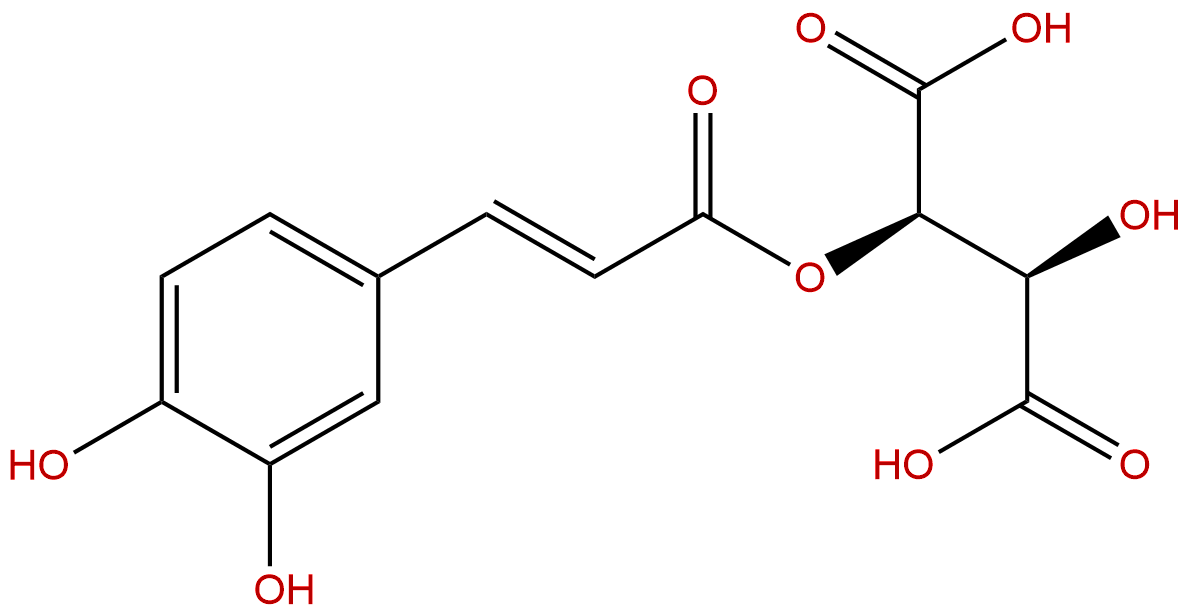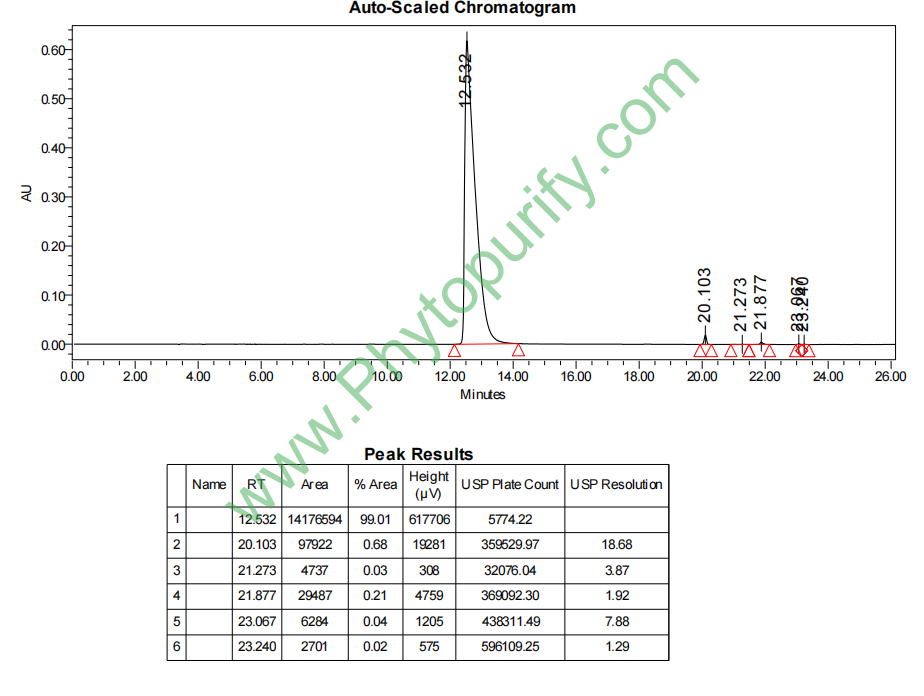
Caftaric acidCAS No.:67879-58-7
|
||||||||||
 |
|
|
||||||||

| Catalogue No.: | BP0302 |
| Formula: | C13H12O9 |
| Mol Weight: | 312.23 |
Product name: Caftaric acid
Synonym name: Monocaffeoyltartaric acid; Caffeoyltartaric acid
Catalogue No.: BP0302
Cas No.: 67879-58-7
Formula: C13H12O9
Mol Weight: 312.23
Botanical Source: Echinacea purpurea (Linn.) Moench
Physical Description:
Type of Compound: Phenylpropanoids
Purity: 95%~99%
Analysis Method: HPLC-DAD or/and HPLC-ELSD
Identification Method: Mass, NMR
Packing: Brown vial or HDPE plastic bottle
Storage: Store in a well closed container, protected from air and light. Put into refrigerate or freeze for long term storage.
Whenever possible, you should prepare and use solutions on the same day. However, if you need to make up stock solutions in advance, we recommend that you store the solution as aliquots in tightly sealed vials at -20℃. Generally, these will be useable for up to two weeks.
The product could be supplied from milligrams to grams
Inquire for bulk scale.
Description:
Caftaric acid is an inhibitor of the protein-protein interactions mediated by the Src-family kinases, which has anti-mutagenicity. Caftaric acid is the major dietary polyphenol present in various foods, it before methamphetamine injections can prevent liver toxicity and oxidative stress.
References:
J Agric Food Chem. 2007 Feb 21;55(4):1604-11.The fate of trans-caftaric acid administered into the rat stomach.
trans-Caftaric acid is the most abundant nonflavonoid phenolic compound in grapes and wines. It occurs in chicory and is one of the bioactive components of Echinacea purpurea. In order to fill the gap of knowledge about its bioavailability in mammals, we investigated its absorption, tissue distribution, and metabolism in rats.
METHODS AND RESULTS:
Assuming that the stomach is a relevant site of absorption of dietary polyphenols, a solution of trans-Caftaric acid was maintained in the ligated stomach of anaesthetized rats for 20 min. Intact trans-Caftaric acid was detected in rat plasma at both 10 and 20 min (293 +/- 45 and 334 +/- 49 ng/mL, respectively), along with its O-methylated derivative trans-fertaric acid, whose concentration rose over time (from 92 +/- 12 to 185 +/- 24 ng/mL). At 20 min, both trans-Caftaric acid and trans-fertaric acid were detected in the kidney (443 +/- 78 and 2506 +/- 514 ng/g, respectively) but not in the liver. Only trans-fertaric acid was found in the urine (33.3 +/- 12.8 microg/mL). In some rats, trans-Caftaric acid was detected in the brain (180 +/- 20 ng/g).J Toxicol. 2014; 2014: 583494.Chlorogenic and Caftaric Acids in Liver Toxicity and Oxidative Stress Induced by Methamphetamine.
Methamphetamine intoxication can cause acute hepatic failure. Chlorogenic and Caftaric acids are the major dietary polyphenols present in various foods. The aim of this study was to evaluate the protective role of chlorogenic and Caftaric acids in liver toxicity and oxidative stress induced by methamphetamine in rats.
METHODS AND RESULTS:
Thirty-two male albino rats were divided into 4 equal groups. Group 1, which was control group, was injected (i.p) with saline (1 mL/kg) twice a day over seven-day period. Groups 2, 3, and 4 were injected (i.p) with methamphetamine (10 mg/kg) twice a day over seven-day period, where groups 3 and 4 were injected (i.p) with 60 mg/kg chlorogenic acid and 40 mg/kg Caftaric acid, respectively, one day before methamphetamine injections. Methamphetamine increased serum aspartate aminotransferase, alanine aminotransferase, alkaline phosphatase, bilirubin, cholesterol, low-density lipoprotein, and triglycerides. Also, malondialdehyde in serum, liver, and brain and plasma and liver nitric oxide levels were increased while methamphetamine induced a significant decrease in serum total protein, albumin, globulin, albumin/globulin ratio, brain serotonin, norepinephrine and dopamine, blood and liver superoxide dismutase, and glutathione peroxidase levels. Chlorogenic and Caftaric acids prior to methamphetamine injections restored all the above parameters to normal values.
CONCLUSIONS:
In conclusion, chlorogenic and Caftaric acids before methamphetamine injections prevented liver toxicity and oxidative stress where chlorogenic acid was more effective.
HPLC of Caftaric acid
